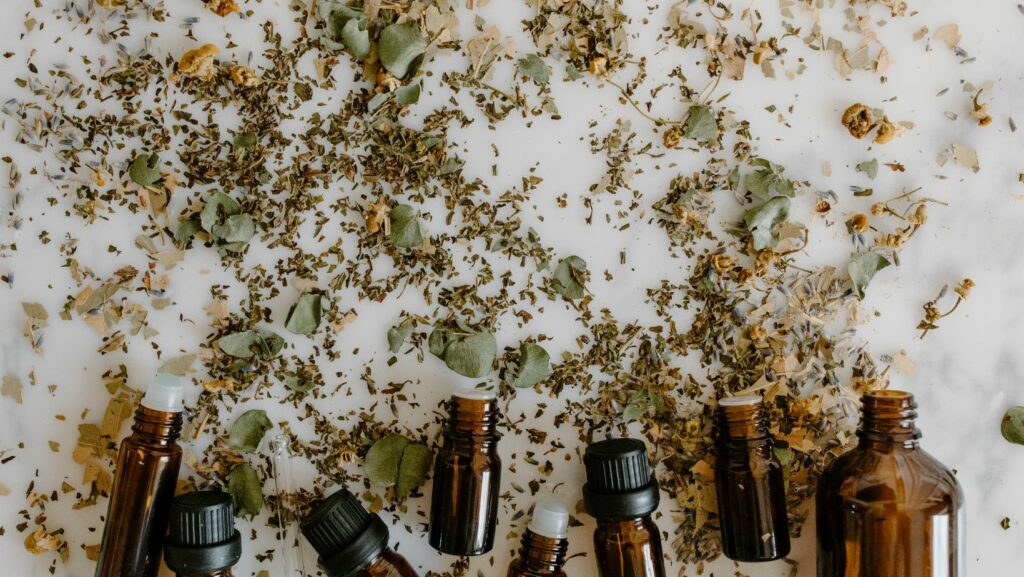Key Takeaways
- Understanding Herbalism Levels: Mastering herbalism from levels 1 to 300 allows players to gather essential herbs vital for crafting potions, elixirs, and enhancing character abilities in World of Warcraft.
- Optimal Gathering Locations: Players should focus on specific zones such as Elwynn Forest, Durotar, and Teldrassil for efficient herb collection, optimizing their routes to save time and increase gathering efficiency.
- Health and Economic Advantages: Herbalism boosts health through potions and elixirs, while also providing substantial economic benefits by allowing players to sell excess herbs and crafted items, enhancing their in-game currency.
- Common and Rare Herbs: Familiarity with both common (e.g., Peacebloom, Silverleaf) and rare herbs (e.g., Black Lotus, Ghost Mushroom) is crucial for maximizing crafting potential and gaining access to powerful consumables.
- Basic vs. Advanced Recipes: Players should master basic recipes early on for potions and gradually unlock advanced recipes that provide greater benefits, ensuring a well-rounded approach to crafting in herbalism.
- Quest Lines for Skill Advancement: Engaging in herbalism quest lines not only aids in skill leveling but also rewards players with valuable items and experience, making it a beneficial pursuit during the leveling journey.
Herbalism has captivated adventurers and enthusiasts alike, offering a unique blend of nature’s bounty and practical skills. In the world of gaming, particularly in titles like World of Warcraft, mastering herbalism from levels 1 to 300 opens up a world of possibilities. Players can gather a variety of herbs that not only enhance their crafting abilities but also provide valuable resources for potions and elixirs.
As players embark on their herbalism journey, they’ll discover the best locations for gathering herbs, the most efficient routes, and tips to level up quickly. This guide will illuminate the path to becoming a skilled herbalist, transforming the way players interact with the game’s lush landscapes. Whether they’re seeking to boost their character’s abilities or simply enjoy the thrill of exploration, mastering herbalism is a rewarding adventure worth pursuing.
1-300 Herbalism
1-300 herbalism offers players an engaging path to mastering the art of gathering herbs in World of Warcraft. Players can gather various herbs essential for crafting potions, elixirs, and other items. The journey begins at level 1 and progresses to level 300, revealing numerous benefits along the way, such as increased crafting proficiency and access to rare ingredients.
To effectively level herbalism, players should focus on specific herb-gathering locations. Some optimal zones include:
- Elwynn Forest: Rich in Peacebloom and Silverleaf.
- Durotar: Offers a wealth of Earthroot and Mageroyal.
- Teldrassil: Home to many Gatherers seeking Swiftthistle and Gromsblood.
Efficient routes significantly contribute to higher leveling speeds. Players can create herbalism paths that minimize travel time while maximizing herb collection.
Herbalism is not limited to gathering; it enhances crafting skills by enabling the creation of potions that enhance gameplay. Examples include buff potions for increased stats, health potions for survivability, and elixirs for specific class needs. This versatility makes herbalism a valuable profession for any player looking to enrich their in-game experience.
While leveling, players benefit from pursuing herbalism quest lines. Completing these quests not only aids in skill advancement but also rewards players with relevant items and experience points.
By embracing 1-300 herbalism, players unlock pathways to crafting mastery, resource gathering, and enhanced gameplay, making it an essential skill in World of Warcraft.
Benefits of 1-300 Herbalism
Herbalism from 1-300 offers numerous benefits that enhance gameplay and strategy in World of Warcraft. Players experience health improvements and economic advantages through mastering this skill.
Health Improvements
Herbalism provides access to a variety of health-related benefits. Players can gather herbs to create potions and elixirs that restore health and enhance stats. Health potions replenish hit points, offering crucial support during challenging encounters. Buff potions increase stats such as agility or strength, improving overall performance in battles. Additionally, players can craft elixirs that provide longer-lasting benefits, fostering survivability in difficult quests or dungeons. Each potion crafted from gathered herbs deepens players’ strategic options, influencing gameplay positively.

Economic Advantages
Herbalism contributes significantly to a player’s economic standing. Gathering herbs allows players to sell excess resources on the auction house, generating substantial gold. Popular herbs like Peacebloom and Silverleaf hold high market value at low levels, while rare herbs like Black Lotus yield even greater profits. Players can also use gathered herbs to craft items for professions like Alchemy, further enhancing their marketability. Efficient farming routes ensure players maximize their collection, leading to increased profit margins. Engaging in herbalism creates a robust financial foundation, allowing for the acquisition of better gear and materials.
Essential Ingredients in 1-300 Herbalism
Herbalism in gaming relies heavily on gathering various herbs, each offering unique benefits. Players focusing on 1-300 herbalism must familiarize themselves with both common and rare herbs to maximize their crafting potential.
Common Herbs
Common herbs serve as the foundational ingredients in herbalism, easily found in various zones. These herbs frequently support players in crafting basic potions and elixirs. Key common herbs include:
- Peacebloom: Abundant in starting zones like Elwynn Forest and Durotar. Used in health potions.
- Silverleaf: Found near water sources, particularly in Teldrassil. Essential for early crafting recipes.
- Earthroot: Located in low-level areas like the Barrens. Offers vital effects in health-restoring potions.
- Mageroyal: Grows in temperate regions, often around roads. Helps create offensive elixirs.
Collecting these herbs regularly ensures a steady supply for crafting and leveling up herbalism.
Rare Herbs
Rare herbs yield advanced benefits and generally require more extensive exploration. Players can create powerful elixirs and potions from these herbs. Important rare herbs include:
- Sungrass: Primarily found in mid-level zones like Feralas. Used for stronger potions that enhance agility or strength.
- Ghost Mushroom: Discovered in dungeons and dark areas, notably in the Deadwind Pass. Vital for crafting potent elixirs.
- Gromsblood: Gathered from higher-level zones. Provides significant health benefits in potions.
- Black Lotus: Extremely rare, mostly found in high-level areas. Essential for crafting some of the most powerful consumables.
Hunting for rare herbs requires strategic planning, often integrating farming routes with quests for efficient collection.
Crafting Techniques for 1-300 Herbalism
Mastering the crafting techniques for herbalism from levels 1 to 300 involves understanding basic and advanced recipes, as well as their specific applications in gameplay.
Basic Recipes
Basic recipes form the foundation of herbalism and are essential for players starting their journey. Players can create healing potions, mana potions, and elixirs using common herbs. Key basic recipes include:
- Healing Potion: Made with 1 Earthroot and 1 Peacebloom, this potion restores health and serves as the first step in potion crafting.
- Mana Potion: Crafted from 1 Silverleaf and 1 Mageroyal, this potion restores mana, crucial for spellcasting classes.
- Elixir of Minor Defense: Crafted using 1 Silverleaf and 1 Peacebloom, it grants players additional temporary armor.
- Swiftness Potion: Combining 1 Earthroot and 1 Mageroyal, this potion increases movement speed for a short duration, helpful for escaping danger or racing to objectives.
Players should gather herbs while exploring zones like Elwynn Forest and Durotar, as these areas are rich in the required ingredients.
Advanced Recipes
Advanced recipes unlock upon reaching higher skill levels and provide players with enhanced benefits in gameplay. These recipes typically require rare herbs and produce more powerful consumables. Notable advanced recipes include:
- Greater Healing Potion: Requires 1 Gromsblood and 1 Ghost Mushroom, offering substantial health restoration.
- Elixir of Greater Agility: Derived from 1 Sungrass and 1 Goldenbark, this elixir enhances agility, benefiting classes reliant on agility-based damage.
- Flask of Supreme Power: Combines 1 Black Lotus and 1 Sungrass, providing temporary boosts to spell power for challenging encounters.
- Transmute: Arcanite: Uses rare herbs like Black Lotus for a chance to create valuable Arcanite bars, essential for crafting epic items.
Players should venture into more challenging areas and utilize efficient farming routes to obtain the rare herbs required for these recipes. Prioritizing skill development in crafting recipes can drastically improve performance in both solo play and group content.
Enriching Experience For Players in World of Warcraft
Mastering herbalism from levels 1 to 300 is an enriching experience for players in World of Warcraft. It not only enhances crafting abilities but also opens up opportunities for exploration and economic growth. By gathering herbs efficiently and utilizing the right routes, players can maximize their resource collection and create powerful potions that boost their gameplay.
The journey through key zones like Elwynn Forest and Durotar offers both excitement and valuable rewards. As players delve deeper into herbalism, they’ll discover the importance of balancing common herbs with rare finds, ensuring a steady supply for crafting. Embracing this skill ultimately leads to a more immersive and rewarding gaming experience.


